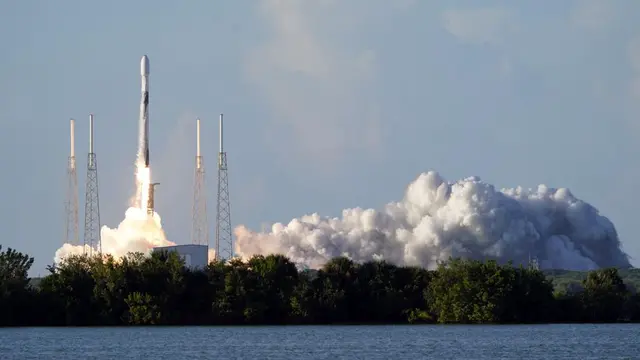South Korea launched its first-ever space mission beyond Earth orbit on Thursday aboard a SpaceX Falcon 9 rocket from Cape Canaveral in the United States, Yonhap News Agency has reported.
The satellite is taking a long, roundabout path to conserve fuel and will arrive in December.
If successful, it will join spacecraft from the U.S. and India already operating around the moon, and China's Chang'e-4 lunar probe and Yutu-2 rover exploring the moon's far side.
India, Russia and Japan have new moon missions launching later this year or next, as do a slew of private companies in the U.S. and elsewhere. And NASA is next up with the debut of its mega moon rocket in late August.
South Korea's $180 million mission – the country's first step in lunar exploration – features a boxy, solar-powered satellite designed to skim just 62 miles (100 kilometers) above the lunar surface. Scientists expect to collect geologic and other data for at least a year from this low polar orbit.
In June, the country successfully launched a package of satellites into orbit around Earth for the first time using its own rocket. The first try last fall fizzled, with the test satellite failing to reach orbit.
Danuri – Korean for "enjoy the moon" – is carrying six science instruments, including a camera for NASA. It's designed to peer into the permanently shadowed, ice-filled craters at the lunar poles. NASA favors the lunar south pole for future astronaut outposts because of evidence of frozen water.
South Korea plans to land its own spacecraft on the moon – a robotic probe – by 2030 or so.
"Danuri is just the beginning," Sang-Ryool Lee, president of the Korea Aerospace Research Institute, said in the SpaceX launch webcast.
(AP)
 简体中文
简体中文





















